The term Unsinkable Aircraft Carriers first appeared during the Second World War, to describe the military use of islands in the Pacific Ocean for the American forces fighting the Empire of Japan.
Since then, Britain and other nations have considered similar strategies to secure military power projection. A look at possible British ‘unsinkable carriers’ points to the relevance of the British Overseas Territories.
Between 2014 and 2017, the UK faced a relevant military capability gap following the decommissioning of its last light aircraft carrier, HMS Illustrious, without an immediate replacement. Before that, as part of the 2010 Strategic Defence and Security Review, Illustrious’ sister-ship HMS Ark Royal was decommissioned roughly five years ahead of schedule. Most importantly, the Joint Strike Wing (or Joint Force Harrier) also faced early retirement.

The ‘British Aerospace Harrier II’ (GR7/GR9) performed its last operational flight from a carrier in late November 2010. In practice, HMS Illustrious would be operated as a helicopter platform until her mentioned decommission in 2014.
Britain’s Carrier Strike capability would initiate its recovery following the commission of HMS Queen Elizabeth in 2017, the first of two new British aircraft carriers. Two years later in December 2019, the second ship of the class, HMS Prince of Wales, entered service and initiated a preparation and training process that is expected to culminate in her first front-line duties in 2023. In the meantime, the production of the F-35B Lightning II as a successor of the Harriers progressed.

According to the British Government, after sea-trials, extensive training and exercises, the first British Carrier Strike Group is going to engage on its first operational deployment in 2021. Despite the difficulties and complexities of carrier programme, the Royal Navy is set to reaffirm itself as one of the few naval forces in the world that operate aircraft carriers for the next decades.
However, Britain and other countries can combine the aircraft carriers with another strategy to secure airpower projection over specific areas based on the so-called ‘unsinkable aircraft carriers’. The term first appeared during the Second World War when Allied officers had to describe the advantages of controlling islands in the Pacific Ocean for the war effort against the Empire of Japan. The small islands were strategically relevant as potential air bases for American aircraft in the Pacific-theatre of the conflict, enabling bombers to reach Japanese territory while giving more operational flexibility to the carrier fleet of the US Navy.
In short, an Unsinkable Aircraft Carrier is a term that can be used to describe a ‘political or geographical island’ that is used to increase a nation’s power projection capabilities. Critics of investments in aircraft carriers sometimes employ the term. Nonetheless, the concept itself is generally imprecise as in practice some of the ‘unsinkable carriers’ are not centred on projecting airpower. Instead, they usually act as traditional overseas bases for more than one branch of an armed force.
Moreover, this military concept can be associated with nations facing a relative decline in the world stage and having to choose between conventional carriers or cheaper alternatives. However, a power projection strategy can have ‘Unsinkable Aircraft Carriers’ while retaining the more flexible ‘conventional’ carriers. Moreover, having a “sovereign” unsinkable aircraft capability requires the control of overseas territories or at least enough influence to establish permanent military bases in independent countries.
This strategy has a base concept quite similar to the ‘Island Chain Strategy’ (ICS). The ICS focus in containing hostile nations through a series of installations built on enclaves or islands near the perceived threat, forming a ‘chain’ of barriers that can slow the advance of enemies and enabling the defender to organise its forces without facing the threat of imminent invasion. Some strategists argue that the Unsinkable Carrier approach is an integral part of the Island Chain Strategy or a similar but divergent approach mainly focused on ‘offensive capabilities’.
Amongst the major military powers, at least the United States, China, Britain and France use this strategy or have the wherewithal to build ‘unsinkable carriers quickly’. Other ascending powers like India have interests in exploring the possibilities of this strategy. Concerning China, the country is applying the approach to the disputed islands and atolls in the South China Sea. Since 2013, China has built seven major military installations in different islands. These new military bases have radars, airstrips, missile facilities and ports functioning as some of the most concrete and complete representations of the application of the ‘Unsinkable Aircraft Carrier Strategy’. While these bases open the South China Sea to Chinese control and serve as “access-deniers”, its ports function as staging points for Chinese operations further away. However, in 2019 reports emerged stating that the conditions of some of these state-of-the-art installations were facing quick deterioration.
The United States currently employs this strategy mainly in the Indian and Pacific oceans. In the same way that the US Navy has the largest fleet of aircraft carriers in the world, the United States is the nation that has most bases that can be classified as ‘unsinkable aircraft carriers’. In the Indian Ocean, the foremost example is the Anglo-American base in Diego Garcia; the main island of the British Indian Ocean Territory (BIOT). The Island’s vast military installations and geographical position has made it one of the most relevant bases used by the American forces when deploying to South East Asia, the Middle East and parts of East Africa. Diego Garcia was also extensively used as a staging point for military campaigns in Iraq and Afghanistan.
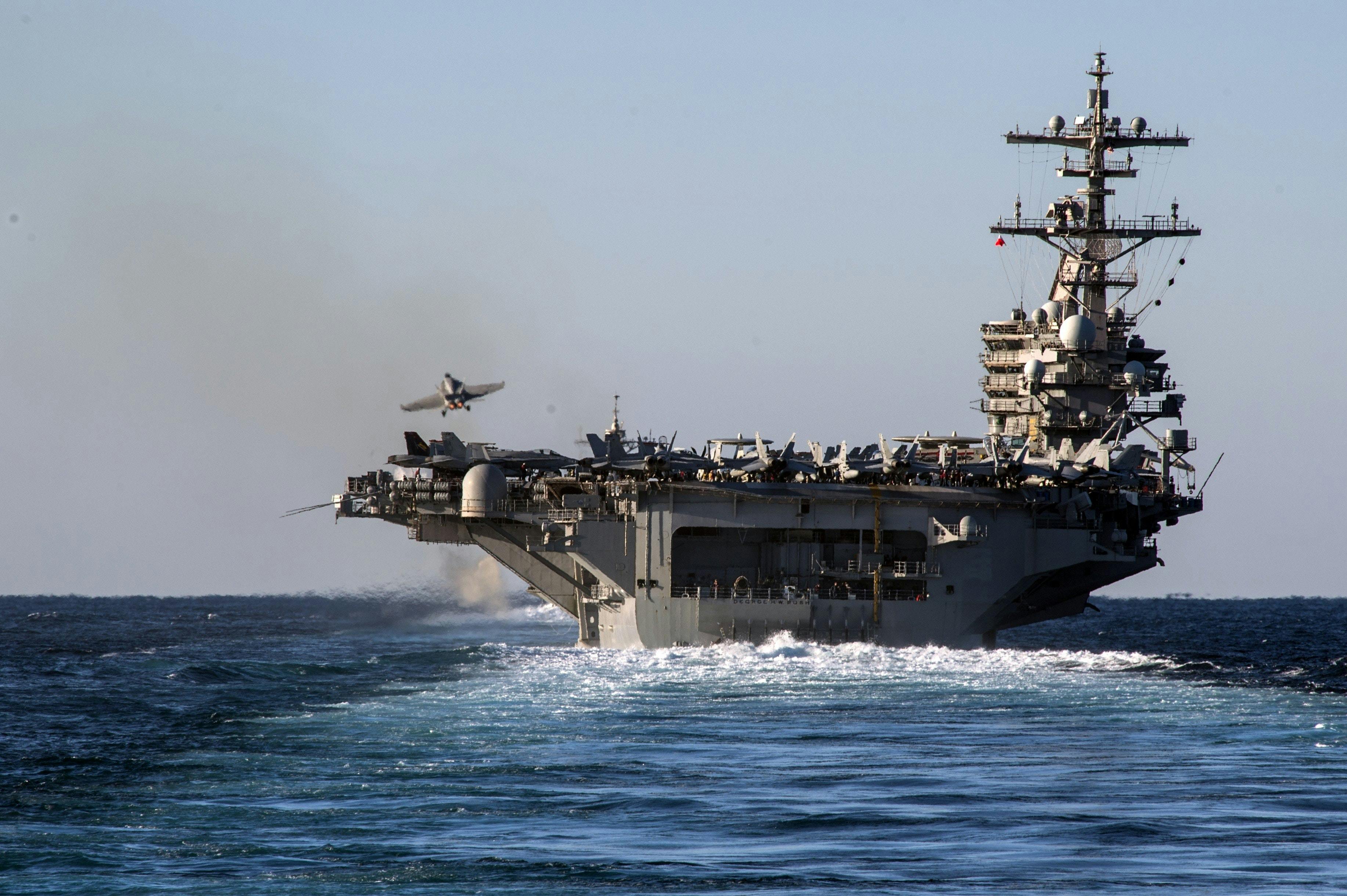
In the Pacific Ocean, the United States controls several strategically important possessions and have extensive agreements with Japan, which allows the presence of American forces in Japanese territories. However, the US Air Force does not exclusively use the majority of these installations. The US Navy is the primary user of the base on Guam. Still, the Air Force operate airfields on Kwajalein Island (Marshall Islands) and Wake Island while having extensive installations on Japanese and South Korean territories. Amongst the American bases that can be classified as ‘unsinkable aircraft carriers’, the Kadena Air Base is a fine example.
Kadena is the most active and largest US Air Force base in the Far East. Additionally, Taiwan is generally classified as a potential ‘unsinkable American aircraft carrier’. During the Cold War, some writers also saw the UK and Japan acting as ‘staging bases’ or ‘unsinkable carriers’ for the American forces.
Through its Overseas Territories and political links with former colonies, the UK has numerous potential assets that can be classified or quickly adapted as ‘unsinkable carriers’. The British debate about this strategic approach goes back to the Cold War. In the early 1960s, the Royal Air Force (RAF) was a proponent of an approach called “Island Strategy”. The RAF held the position that the whole of Africa could be covered from the UK and its insular territories if demanded, arguing that the plans for new aircraft carriers for the Royal Navy were unnecessary. Thus, the ‘island air bases’ could provide greater value for money, and Britain should explore the potential of its overseas possessions investing in an ‘unsinkable carrier’ strategy.
The Admiralty counter-argument stated that carriers could provide greater flexibility than islands and that the risk of the end of British rule over some territories could hit Britain’s military capabilities significantly. Additionally, the ‘conventional’ carriers were an advantage for crises could emerge beyond the reach of the British airbases and the installations themselves could be engulfed by enemy military superiority and eventually used against Britain. These arguments also indicated that the ‘Island Strategy’ was a defensive approach in its core. The Admiralty’s position only grew more robust than the RAF’s during the decolonisation of British colonies in Africa and Asia that were part of the planned Island Strategy. Therefore, the Royal Navy retained its Carrier Strike capability throughout the Cold War.
By the late 1960s and early 1970s, the British Government had decided to withdraw from most of its commitments East Suez enabling the ‘sinkable but moveable’ approach to overcome the remaining ‘static but unsinkable’ ideas. Nevertheless, Britain would retain strategically relevant Overseas Territories that were used in the nineteenth century as coaling stations for the Royal Navy and British merchants. It is possible to identify some islands or enclaves under British protection acting as staging points for Britain’s expeditionary capabilities.
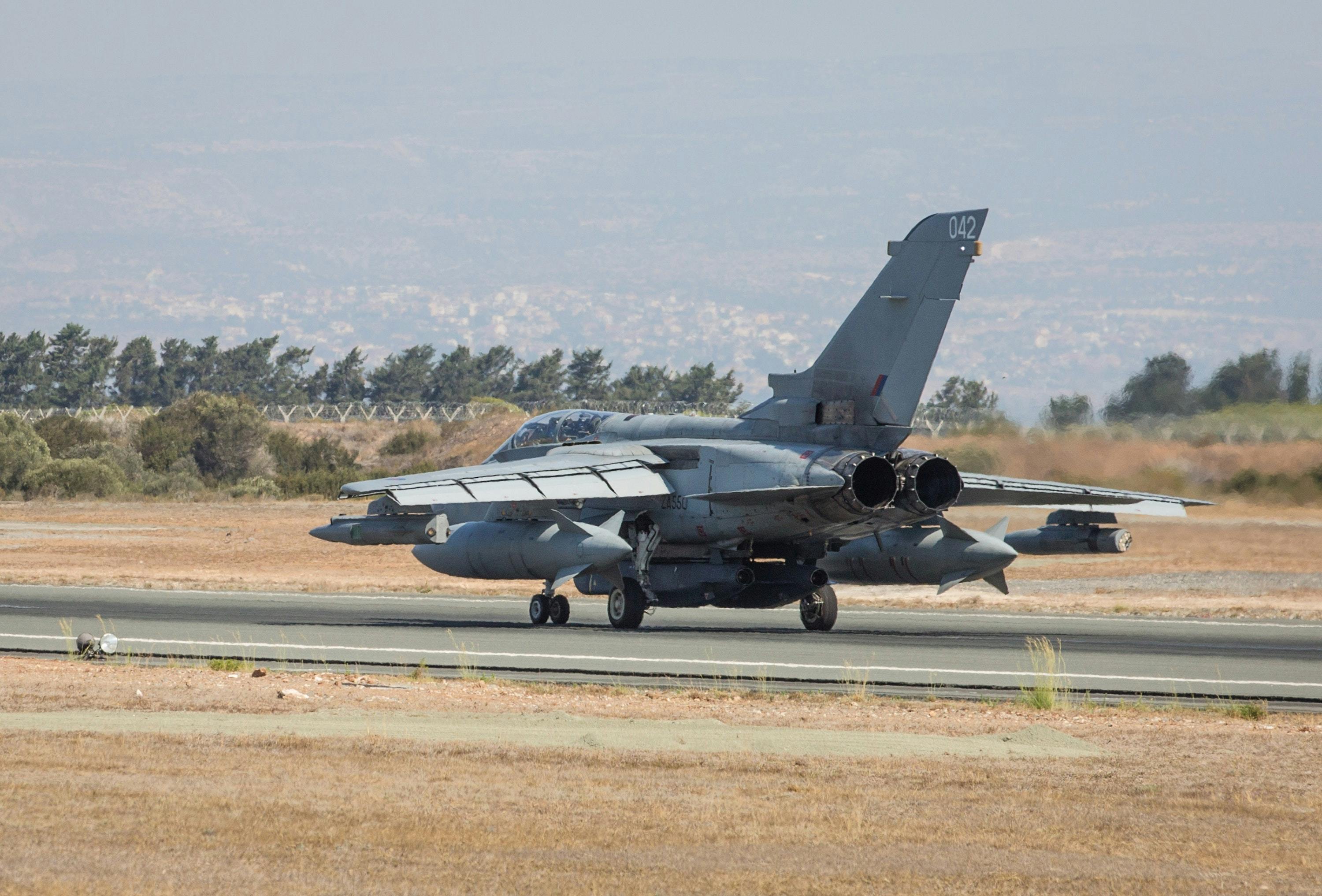
The most relevant possessions are Gibraltar, the Sovereign Base Areas of Akrotiri and Dhekelia, the Falkland Islands, Ascension, Santa Helena, Diego Garcia, Bermuda, and to a lesser extent the Turks and Caicos Islands, Montserrat, Anguilla, the Cayman Islands and the British Virgin Islands. It worth noting that every British Overseas Territory has potential military use, yet not every possession shares the same strategic location value.
Diego Garcia, a part of the BIOT, is one of the most common examples of an unsinkable aircraft carrier. Although the US military forces are the primary users of the extensive military installations, Britain maintains a permanent presence through the Naval Party 1002 (NP1002) for the civil administration of the territory. Moreover, the base is continuously open to the British Armed Forces. Except for the remote British territory of Pitcairn in the southern Pacific Ocean, the BIOT is last possession under Britain’s control East of Suez. As tensions grow between the Western powers and China, Diego Garcia enables is set to remain a crucial asset for independent military deployments to South East Asia.
Beyond the BIOT, the Sovereign Bases Areas of Akrotiri and Dhekelia are other examples of ‘unsinkable aircraft carriers’. The Western Base, Akrotiri, is home of a large Royal Air Force station (RAF Akrotiri). At the same time, the Eastern Base (Dhekelia) has a Joint Service Signal Unit that collects signals data and intelligence from the Mediterranean and Middle East region. Despite being focused on signal units, Dhekelia has a small airfield employed as a Helicopter Base for the Army Air Corps. The British Government retained these two enclaves during the ‘London and Zurich Agreements’ of 1960, which resulted in the independence of Cyprus.
Covering roughly 3% of the land area of the Island of Cyprus, the two bases grant Britain a privileged position for deployments East of Suez or operations throughout the Middle East. Since 2014, through Operation Shader, Royal Air Force has been using RAF Akrotiri as a launchpad for airstrikes against the Islamic State in Syria and Iraq. In May 2019 the British Government announced that ‘several F-35B Lightning aircraft from the 617’ flew from their base at RAF Marham ‘to spend six weeks at RAF Akrotiri as part of the Exercise Lightning Dawn’.

The British Territories in the South Atlantic share Gibraltar’s relevance. Officially, the UK has three Overseas Territories in the area: ‘Saint Helena, Ascension and Tristan da Cunha’, the Falkland Islands and ‘South Georgia and the South Sandwich Islands’. Amongst these possessions, Ascension and the Falklands have been attracting significant military interest from the British Government since the nineteenth century, but especially after the Falklands War. In the case of Ascension, the United States and Britain jointly operates the Island’s airfield, called RAF Ascension Island or ‘Wideawake Airfield’. Ascension’s infrastructure is essential for securing connections with the Falklands without relying on the willingness of regional countries. Britain witnessed Ascension and Gibraltar’s relevance during the Falklands War when the British Task Force heading to the South Atlantic used both territories. Despite its importance, in 2017, the British Government confirmed that the RAF Ascension would be partially closed due to potholes on the runway. In January 2020, the US Air Force Installation Contracting Agency awarded a contract to an American construction firm (Fluor) to repair the airfield’s runway until the end of 2022.
In 2015, an international airport was completed on Saint Helena. Following delays, commercial flights began in 2017. The airfield gives Britain another potential staging point in the South Atlantic for deployments to the Falklands and western coast of Africa. Despite that, Saint Helena’s military potential is overshadowed by the well-established presence at RAF Ascension.

The Falkland Islands is another British territory that could be an ‘unsinkable aircraft carrier’. RAF Mount Pleasant, the territory’s main military installation, has its origins in the aftermath of the Falklands War. Britain was determined to protect its overseas possession and the Islanders’ right to decide their political future after the war that led to the death of 255 Britons, 649 Argentines and three Falkland Islanders. In 1985, RAF Mount Pleasant was officially opened, becoming fully operational the following year. The military installations host forces that have as duty preventing invading troops to overrun the British control before reinforcements can arrive from the UK. The RAF Mount Pleasant, Mare Harbour and the three ‘early-warning and airspace control radars’ present throughout the Falklands give the British forces a relative control of the surrounding areas, including the Drake Passage and the Strait of Magellan. Few of the major military powers can claim a similar control over the extreme south of the Atlantic.
Thus, considering the British territories and military installations throughout the area, the South Atlantic is secured within Britain’s power projection capabilities. However, this relative control of the South Atlantic is largely possible due to every “link” of the British chain of islands in the region. Thus maintaining a modern and fully operational military infrastructure on Ascension and the Falklands Islands is central to any conception of the South Atlantic as a main British theatre of operations.
The majority of the British Overseas Territories in the Caribbean and North Atlantic could be used or adapted to become an ‘unsinkable carrier’. Nevertheless, excluding Bermuda, – that has seen its geostrategic position being used by the RAF and US Air Force during the World Wars and Cold War – other possessions have not witnessed the same level of military presence. Additionally, following the reduction of the British military presence in the region as part of the decolonisation process, Britain would maintain a training base in Belize.
Lastly, the infrastructure of the Cayman Islands, Turks and Caicos, the British Virgin Islands and Anguilla in the Caribbean can offer support to Britain’s military during emergencies. It is worth mentioning that Montserrat’s only international airport was destroyed in 1997 by an eruption of the nearby Soufrière Hills volcano; its replacement was completed in 2005, but the new runway is half the length of its predecessor. Despite the significant reduction of British military presence in the Caribbean since the 1960s, the British Government continues deploying vessels of the Royal Navy and Royal Fleet Auxiliary to the region, especially during the Caribbean hurricane seasons.
Defence agreements with friendly nations are also part of London’s strategy to retain a voice in different regions while keeping the costs as low as possible. Since 2014, the country has been investing in permanent military bases in Bahrain and Oman as part of an approach seeking to reaffirm Britain as a global player. However, the Royal Navy and Royal Fleet Auxiliary are the focus of these military bases. The leading British base for air operations in the region is located at the Al Udeid Air Base, in the United Arab Emirates. Deployments of the Operation Shader use Al Udeid and RAF Akrotiri.
The Five Power Defence Arrangements (FPDA) also enables the UK to have close defence cooperation with Australia, New Zealand, Malaysia and Singapore. Additionally, Brunei permanently bases a British Gurkha Battalion as part of agreements between London and the Bruneian Sultan. Currently, the British presence in Brunei is centred on land forces that have access to significant military facilities and training areas of the Asian nation.
Therefore, Britain is amongst the few countries that have at disposal ‘unsinkable aircraft carriers’ or can quickly adapt the existing infrastructure of overseas territories when needed. As the country with more military bases overseas, the United States is also the one at the forefront of the ‘unsinkable carrier’ strategy. The American Government uses bases in foreign countries or American possessions throughout the world that act as supporting assets to the US Navy fleet of aircraft carriers. These bases are a valuable addition to the United States’ power projection, aiding the nation to secure its presence overseas. In a reduced scale, China is experiencing the strategy in the South China Sea while France shares some of Britain’s characteristics: the use of its overseas territories or agreements with friendly countries.
As already explained, the British Overseas Territories are essential assets for the UK’s expeditionary capabilities. Some of these territories have military installations that have been supporting British interests around the world for decades. However, classifying them as ‘unsinkable aircraft carriers’ might downgrade their relevance for the other two branches of the Armed Forces while overstating their value for British airpower. The British Overseas Territories are more than airfields to the UK. Although the current local installations limit their capabilities, the Territories can act as supporting bases for the three branches of the British Armed Forces.
In 1982, Gibraltar and Ascension confirmed their importance while providing staging points for the Task Force sent to recapture the Falkland Islands. Nevertheless, the Overseas Territories complements conventional military capabilities. Without an adequate Armed Force, Britain might witness itself being unable to utilise the strategic potential of these possessions when necessary. At the same time, the label ‘unsinkable aircraft carriers’ would be insignificant without the assets meant to use them when demanded.
Since the 1960s, Britain gave independence to several possessions that once were considered strategic pivots of British power. Amongst these, Malta is one of the few that had the label ‘unsinkable aircraft carrier’ when London granted independence. However, some territories opted to maintain their political links with London, continuing to be defended by the UK against external threats.
The current British Overseas Territories have been supporting British interests around the globe for centuries. The debate about classifying and using some of them as potential ‘unsinkable aircraft carriers’ displays their enduring relevance to the UK.
In short, even considering the term and its usefulness as a strategic approach open to criticism, a significant part of any study about a ‘British Unsinkable Aircraft Carriers’ strategy has to take into consideration the potential of the British Overseas Territories.




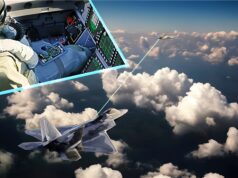
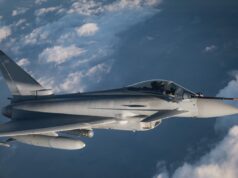

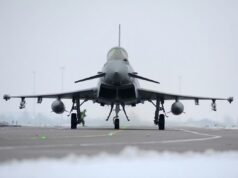
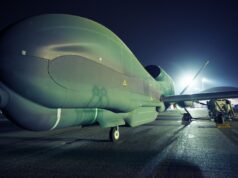

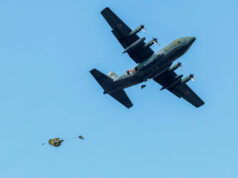



Off topic – Is it true the HMS PoW has been flooding!!? As that’s a massive blow
Once we get the Carriers, fully operational and enough F35Bs then we will see the RN start projecting more power, along with the new expeditionary forces that will come in to play.
A boost in the budget and new ships, T31, T32 being designed and built then yes we are moving in the right direction.
Decades over due isn’t it..
Hi John,
To answer your question – Yes. PoW appears to have suffered a failure of a high pressure water system. Unfortunately, unlike the QE’s incident this leak occured close to elements of the High Voltage system for the electric motors. This will lead to significant repair work and the ship not sailing until later in 2021 than originally planned. The link below is to a Save the Royal Naval article giving a more sober explanation than the mainstream press will ever give you.
https://www.savetheroyalnavy.org/one-of-the-reasons-the-royal-navy-needs-two-aircraft-carriers-a-setback-for-hms-prince-of-wales/
This is a set back, but given the fact that the ships have to have high pressure salt water systems for fire fighting and will inevitably have lots of electrical systems on board incidents like this will happen.
With in the context of the over all RN development it is a temporary issue and you are right to highlight the good news as well. Bet the press don’t.
Cheers CR
Hi John and CR,
so tied up alongside PoW has been put out of action by a flooding high pressure water main?
Am I reading that correctly?
It all counts for nothing if we are still a full generation waiting for them to get built.
Excellent article.
These are true assets to the UK and HM forces. I see them, and the carriers, as complimentary to each other, giving even greater flexibility.
The key ones are known by Strat Com as PJOB’s “Permanent Joint Operating Bases”
One minor, picky point on Cyprus, a mention should be made of the retained site of RAF Troodos Station, which is apart from the western and eastern SBA’s. This is located on two mountain peaks in the Troodos Mountains. One I believe is radar, the other is Golf Det of the JSSU, and one of the key sites for GCHQ / NSA / 5 eyes in Cyprus.
Unsinkable, yes, uncapturable no! An aircraft carrier that has sunk is not available to an enemy, whereas a land base is. As well as the means of protecting the carriers, sufficient other resources have to be available for non-air projection duties. This latter is doubtful, depending on the scale of conflict and nowadays we do not have the luxury of spending several years building up armanents, not least because we lack the capacity to do so without imports.
And also air/missile protection.
Cruise missile strikes are the most likely way of trying to deny an airbase as it is low risk to assets.
So you end up having to have Aster 30/15/Ceptor to make sure the base is safe as well as a good package of land forces to deny easy SF insertion.
Suddenly land bases don’t look so cheap.
Although we do at least own some LandCeptor systems now. So that kind of defence is not totally in the fantasy bracket.
Hi Nscniick,
You make some very good points.
Building up and maintaining a base and then not providing it with sufficient forces to defend it make no sense at all and our Armed Forces are currently too small to effectively make use of many of these bases. Having said that with any luck the recent increase in defence spending will be the first step in the long road to recovery for our Forces, although I expect the road to be pretty bumpy.
You also mention our dependence on imports for defence equipment. I will point out that we were highly dependent on imports during both World Wars and I think we will always be dependent on such imports. However, I believe that we have abdicated some pretty fundemental defence industry capabilities, including armered vehicle and many basic types of munitions production capability. This means we would be hard pressed to maintain even a basic defensive posture in the event of our allies being overrun. Politicians are very good at forgetting inconvient lessons of history when it suits them.
Cheers CR
Hmm, but then again The Falkland islands are reasonably well defended and most of the rest of our global bases (with the exception of Cyprus and Gibraltar) are pretty isolated. Ascension, Saint Helena and Diego Garcia especially are thousands of miles away from the next nearest landfall. Be able to send defensive kit and personnel at short notice from the UK is better than swallowing up valuable resources by permanently guarding them.
You’ve said, better than me, pretty much what I suggest below.
And in the case of BIOT and Ascension, an aggressor would be attacking the US too.
Bad idea!
What forces would you suggest to defend them?
There are already garrisons at the PJOBs that are relevant. And overt and covert security.
BFC alone has 2 infantry battalions if needed, one being theatre reserve.
BFSAI has Land Sceptre / Rapier.
UAS and terrorism / sabotage seem the greater threat.
The SAM air defence question could apply to all our UK mainland sites too, the costs of that much comprehensive SAM coverage would be horrendous.
Nobody ever mentions Gibraltar anymore. It do attack from another hostile esn’t need a rocket scientist to remember the importance of the rock. It’s long been my belief that the rock should be a fortress I doubt Spain will attempt a grab for it, but just a concerted attack from another nation or hostile entity could have very big repercussions. I’d put any retiring piece of kit worth location on or, inside it should be a common thing
Good and comprehensive article.I am surprised that the repairs to Wideawake have taken so long to initiate-over three years have passed since traffic to Ascension was curtailed to include only aircraft able to operate from the serviceable section of runway.
I’m guessing we knew we could use the new airport in St Helena as an alternative and have essentially waited for the Americans to foot the bill. They can’t have a particularly pressing need to fly aircraft in if it’s taken 3 years to start the repairs.
Hi Challenger. The runway at St Helena Airport is only 1,9 kms long so this limits its utility. It cannot accomodate larger civilian and military aircraft. The first and only RAF plane to land there was a Hercules which managed it easily only needing about half the length of the runway. there were mixed results with the 737. The current aircraft apart from smaller types, servicing the route are the Embraer 190 and more recently the Boeing 757 which has a bigger passenger accomodation. The old Bae 146 in the Avro guise can also land there comfortably. There is no possibility of lengthening the runway-it goes almost cliff to cliff and the construction included one of the biggest earthmoving operations on the planet at that time. i followed the construction of the SHA from start to final commissioning. It was built by a South African company, Basil Read who did an amazing job against almost insurmountable odds having to purchase a freighter, build a port of sorts and a difficult road in a steep valley just to access the site before any construction could begin. Sadly they went bust recently due to other issues.
Hi Geoff,
Thank you for your reply. Really interesting stuff!
Begs the question that aside from the solitary Hercules where have the RAF’s Falklands flights been stopping at and why the MoD haven’t forked out to fix the Ascension runway sooner?
UK islands in the Atlantic might become more relevant in the coming decades as China expands its expeditionary capabilities. I imagine the presence of a flotilla of Chinese warships sailing up the West coast of Africa would raise a few eyebrows in St Helena, and Ascension, among others.
That may become a real threat. Another is PRC spending lots of money to develop infrastructure in places like Africa & S America, gaining political & economic control over smaller nations & getting bases there in the future. PRC are terrified of it’s people rebelling like the ex-soviet satellites did & may work to get the rest of the world under the grip of tyrants, stiffling free speach & threatening the future of the free world. They already have technology deployed to monitor everything any Chinese citizen says overseas so they can be dealt with when they return. What if they extend this to anyone criticizing them?
An informative and interesting article!
Carriers and bases clearly compliment each other and we’ve been rather canny in retaining a variety of useful installations across the globe.
Was the fuel wharf at Singapore mentioned? Not British territory obviously but another prime asset that i believe actually makes money for the MoD. It’ll no doubt be rather busy when the carrier-group visits next year and i’d be interested to hear how it could potentially be expanded and improved if we do see more deployments East of Suez in the future?
Difficult to assess long term reliance on Brunei and, regrettably, Oman as both heavily targeted with investment under China’s Belt & Road Initiative.
Not too worried with Oman.
We’ve been in bed with the Sultan of Oman on many levels, for decades. There are UK facilities there too not in this article.
Is it true that our presence in Brunei is at the invitation and expense of the Sultan?
Yes for Brunei, as I understand it, whereas with both the Chinese are heavily INVESTING in port facilities and other infrastructure which, in Oman’s case, includes desert conurbations as well as Duqm and Salalah. It’s not altruism, Daniele!
Combined, the West and like minded Asian countries need to get their finger out. Whatever else, one cannot deny the Politburo’s strategic coherence.
Furthermore, if you count Sri Lanka, Pakistan, Oman and Djiboutl into the equation, you have potentially, at the very least, spokes aimed at Diego Garcia.
I share your fondness for Oman and hope we don’t sleepwalk into a fait accompli based upon past relationships under Qaboos.
Regards
It is beggars brief that we gave way Brunel to a autocratic ruler without asking the locals a say so!
What was Thatcher smoking at the time, goodness me knows!
Don’t really think the autocracy in Brunei can be blamed on Thatcher! We saved the monarchy’s bacon back in the 60’s when the sultanate experienced an internal rebellion over tensions with the newly forming Malaysia and Indonesia.
Brunei was a protectorate (independent in all but name) until that final tether was cut in 1984, during Thatcher’s time in office but not really her doing.
The fact that we continue to support and have close ties to a pretty hard-line Islamist and autocratic state today is pretty unsavory though.
I find it surprising that Brunei is considered hard line. I don’t know just what type of news they’ve been getting in the the UK, but I think they’re rather middling by the island’s standards. Certainly much softer than some of the other areas surrounding them or the Arabs.
As an autocracy, they seem to be quite perceptive of their peoples needs. Military wise, they seem to be cosying up to Singapore and Indonesia. Though that might be because I can’t read the languages that doesn’t use Latin in the area.
If the naval base at Diego Garcia has enough space left to support either PoW or QE which I believe it will, then we should consider forward basing one of the carriers and support vessels for the pivot to the East
From our side we don’t seem to use it to its full potential
It feels more of a leave it up the yanks…. time that changed
”Since 2013, China has built seven major military installations in different islands. These new military bases have radars, airstrips, missile facilities and ports functioning as some of the most concrete and complete representations of the application of the ‘Unsinkable Aircraft Carrier Strategy’. While these bases open the South China Sea to Chinese control and serve as “access-deniers”, its ports function as staging points for Chinese operations further away.”
As the report goes on to say, these are now suffering deterioration, degrading there usefulness to the Chinese, but in these days of T-LAM, SLBMs and Poseidon, are such places really that much of an advantage?
Or are they more of an anoyance, needing to be removed before an attack could be mounted on the mainland?
Not sure we have enough combat air for our own unsinkable island, or the carriers, let alone these…..
I am one who has been disgusted with the treatment of the Cagossians in Diego Garcia. I understand the “unsinkable aircraft carrier” concept and recall the “Chain of Command” in the sixties that spanned the globe for similar purposes. I insist that “any study about a ‘British Unsinkable Aircraft Carriers’ strategy has to take into consideration the potential of the British Overseas Territories”AND the interests of those living in each participating country. We must not ride roughshod over these people or we are no better than the Russkis and the Chinese!
The problem was that if they’d been left there they’d have probably declared independence under self determination – rather than see virtually all the decent bits turned into military facilities. That would have wrecked what was a critical location – and DG was about the only place small enough and far away enough to get away with what was done.
Yes, a civilian labour force is needed and they could have done well from the base – but the climate of the time was everyone seeking self determination now and damn the cost. With the base now built (and thus the jobs) then it does seem a better deal could be struck.
Problem there is who do you deal with and by doing so you set yourself up for a fall in terms of legitimising them – especially if they dont play along.
Malta is a good example of what could happen – there not being a deal in prospect for the base, which unlike Cyprus could not be carved out of otherwise less significant areas.
How dare they even think of declaring independence. Your response underlines the one-sidedness of that imperial mindset we should have shaken off by then and definitely by now. Personal misery counts for nothing. We do need strong defence but we do not need to be the world’s policeman. Costs too much in lives and treasure.
Hmmm, this was for the Americans to be the world’s policeman, not us!
I think it was a tiny handful of people who did at least get resettled and money. Vs historical empire practice of a bayonet. In that reapect things had moved on a lot!
Very pleased to read. the portray about English geostrategy and geopolitical is correct. I agree 100 % however about Malta i can’t still agree because it is a very crucial point in the network concerning East Suez and Western Mediterranean as i will always say : who control Malta control the Mediterranean sea, this is due to it’s geographical position.
Just to point out Al Udeid airbase is in the State of Qatar 🇶🇦 not the UAE 🇦🇪
the UK is still vital to the protection of freedoms everywhere
The jinxed prince of. Wales has spent a whopping 33 percent of it time in commission in dock or alongside in pompey.this is dreadful.
The former naval base in Ireland islandh.m.s maribar, on Bermuda was and still could be a ideal location for the vessels in anti drug smuggling duties